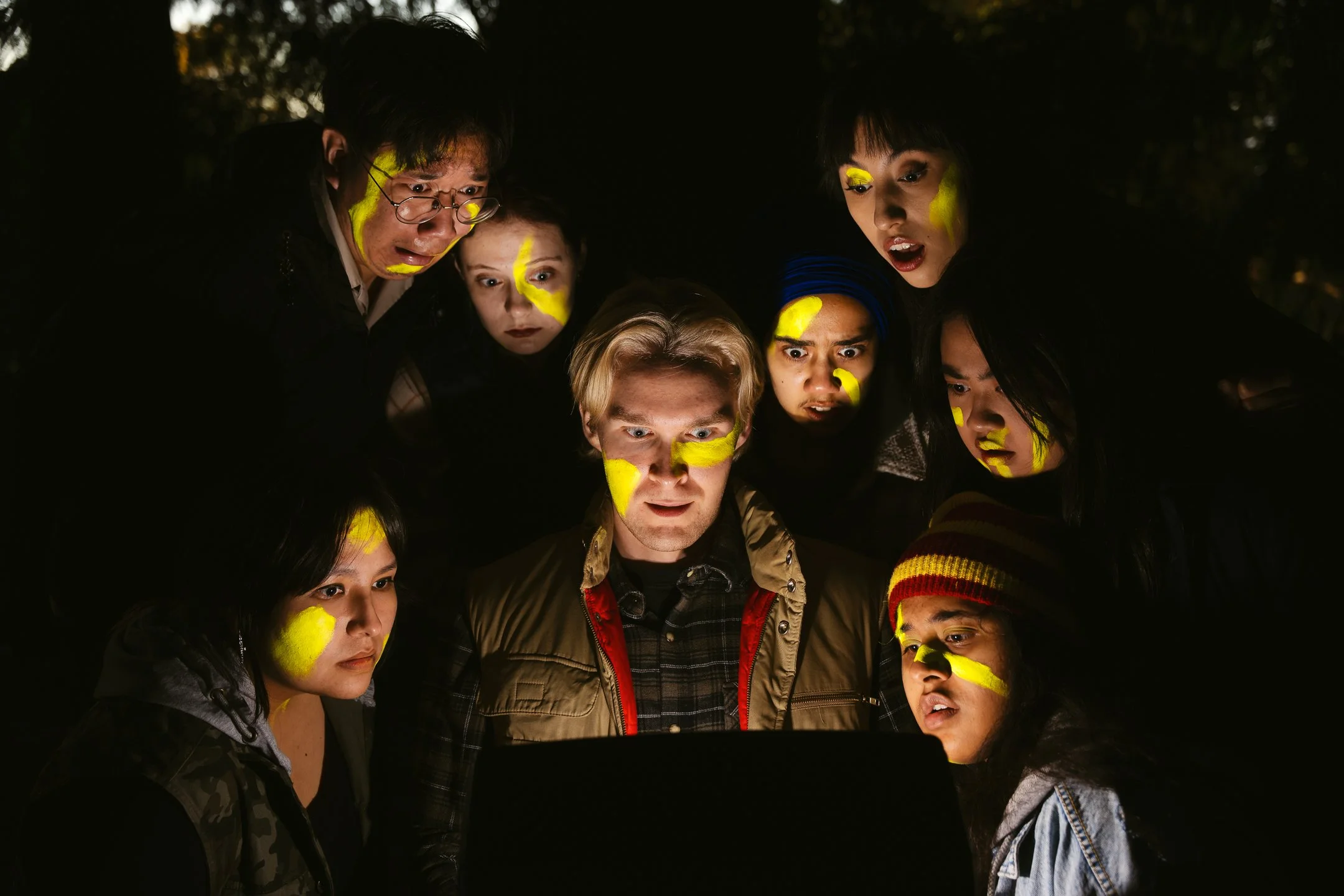Excerpts from SAD's Future: Doing Things For Today
/There's a video of X-Ray Spex performing live that I’ve watched many times over. Poly Styrene’s fist, wrapped tightly around her microphone, whips through the air. Her face is round, and sticky with sweat. Framed by dark curls, and bedazzled by the braces on her teeth, she jumps in and out of view above the crowd. She takes off her leopard-print cap and throws it to the side before amping up her stage moves. Playful disregard is writ large all over her performance. As Styrene jerks around, she squeezes her eyes shut and splits a smile, one that seems totally unavoidable in this moment of wild abandon.
The frame tightens as she starts to sing, her lyrics punctured by screams while softened by her slight lisp. “Oh Bondage! Up Yours!” is Styrene’s most well-known and beloved anthem, and she delivers it powerfully. That sneaky smile, the one that can’t be helped, remains on her face as the song carries on and its energy climbs toward joyful rebellion. A kind of punk utopia is being built—disorderly, improvisational, and shared by anyone screaming along with Styrene’s voice.
The word utopia was first coined by Sir Thomas More, a member of the philosophical elite during England’s Renaissance period. He took this word from the Greek for “no-place,” and considered the concept a satirical joke. Surely, the perfect communist, egalitarian, rights-conscious society could never truly exist. Hence its nowhere status. Yet since its sixteenth-century inception, the concept of utopia has held much weight and influence in our cultural consciousness, as scholars, political leaders, creatives, and despots alike have all dreamt up their ideal versions of this “no-place.” It’s an imagined future, an alternative realm or faraway location, that proposes an exceptional form of community at some fixed point on an impossible map. Utopia isn’t in the here and now.
But what if utopia was seen as a moving target, a fleeting thing? What if it was a feeling that we could access in times and spaces of spontaneous emotion? A messy and provisional moment shared between people.
In November of 1977, Styrene gave an interview to Australian music critic Molly Meldrum, who interestedly (though perhaps a little facetiously) poked the 20-year-old British punk with questions in equal parts about her songwriting and her clothing. In the television clip, Styrene isn’t the most giving of interviewees, but it seems due to thoughtfulness rather than reluctance. When Meldrum asks about her colourful outfit and braces (as though they’re some kind of accessory she dons for fun), Styrene mostly shrugs and says she likes what she likes. But when he asks about the specifics of her band, X-Ray Spex, and their place in the music scene, she responds with assurance. “See, I just think New Wave or punk rock is just young people, sort of, getting up and doing something, creating something,” she says. “I think it’s just young people doing what they want to do to express themselves in their own way.” Later, in that same interview, Meldrum asks Styrene which bands inspired her own, and which she likes best. “I like all the young bands, really,” she responds, “just doing things for today.”
Some of my favourite writing on the topic of utopia has been done by Jill Dolan, a scholar of performance as well as gender and sexuality studies. In her words, “the utopia for which I yearn takes place now, in the interstices of present interactions, in glancing moments of possibly better ways to be together as human beings.” Utopia exists within bold human emotion and connection, as we improvise and do things—create things—for today. Punk, with its furious pounding against the dystopian present and its acceptance of utopia as ephemeral and rough, is ripe with potential for transformative ways of being together. Punk, in a word, is messy. It is an impulsive and fragmentary process of community building and expression. Utopia is the same: it exists within experiences shared by people over scattered moments in time. Dolan suggests that the utopia we seek will never be definitively complete, rather that it will remain open-ended as we work together in the now. Styrene believed something similar; before forming X-Ray Spex, she placed an ad in the papers calling for “young punx who want to stick it together.” It was as much an ad for communal rebellion as it was for future bandmates. Styrene was a young, wildly talented woman of colour in a genre dominated by greasy white boys. Her presence was disruptive and magnetic, and it drew people closer together.
How could More ever predict that his stuffy, satirical “no-place” would one day find purchase in the pit of an X-Ray Spex show? Or, more generally, in the space between performers, activists, audiences, and friends? Would More have considered that people could know its topography simply by throwing themselves wholeheartedly into the chaotic process of community-building? Utopia, when seen as a fleeting and transformative moment shared between people, rather than a destination on the horizon of the faraway future, suddenly becomes meaningful and influential in the everyday realities of our lives. Utopia is liminal; we pass in and out of it and are changed when we do.
To me, utopia represents the constant hope of possibility—I could meet it anywhere, at any time. Bursts of adrenaline and happiness, sudden feelings of connection and understanding, strong bonds carved from mutual love of music, art, anything; these are utopias, plural. They are constantly open and flowing between people, occupying an expansive field of possibility which stretches beyond any specific time or fixed location. Utopias are rough, unkempt, and caustic places of radical identity and togetherness. They allow people to know what they cannot chart, embrace what they cannot see, and feel what it might be like to exist within a hopeful future, even if only for one wild and burning moment.





